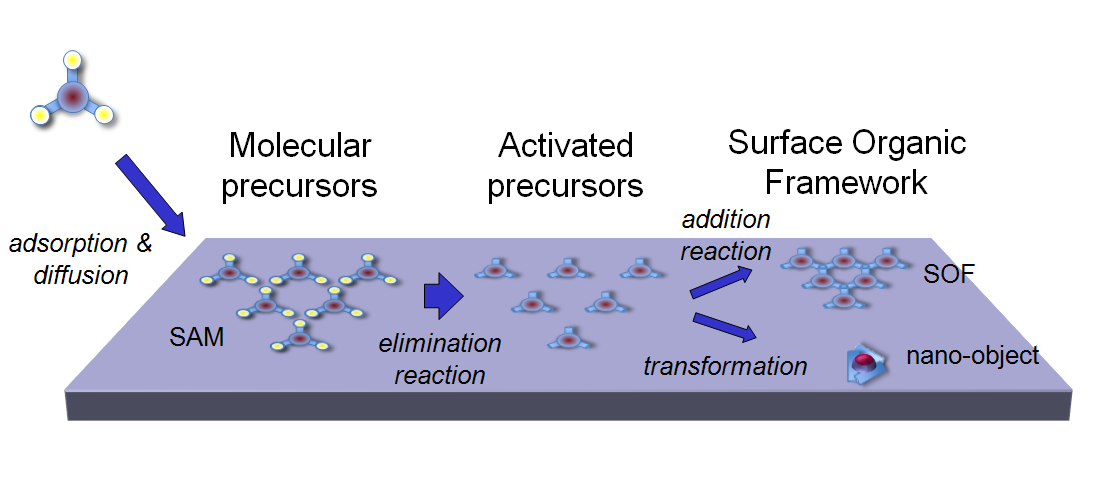A tutorial Chemical Society Review
On-surface synthesis can be regarded as an efficient means to build new molecular species by using bottom-up strategies. Recently, a collection of different reactions leading to large tailor-made organic molecules on single-crystal metal surfaces has been reported. The fundamental mechanisms controlling these reactions can be investigated from a surface science perspective. This discipline skilfully combines the use of characterization techniques at the nanoscale, with single-crystal metallic surfaces able to catalyse these reactions.
Full text in this link: J.Mendez, M. F. Lopez and J. A. Martín-Gago; Chem. Soc. Rev., 2011, 40, 4578–4590
Schematic and simplified representation of an on-surface synthesis process. The deposited molecular precursors arrive to the surface and diffuse on it. In some cases, they could form an ordered SAM, which provides a pre-organization of the system. After a thermal treatment activated species can be formed. These species could lead either to surface organic frameworks (SOF) or being individually transformed into other different molecular species (nano-object), after for example, a surface assisted cyclodehydrogenation (SACDH) reaction.

